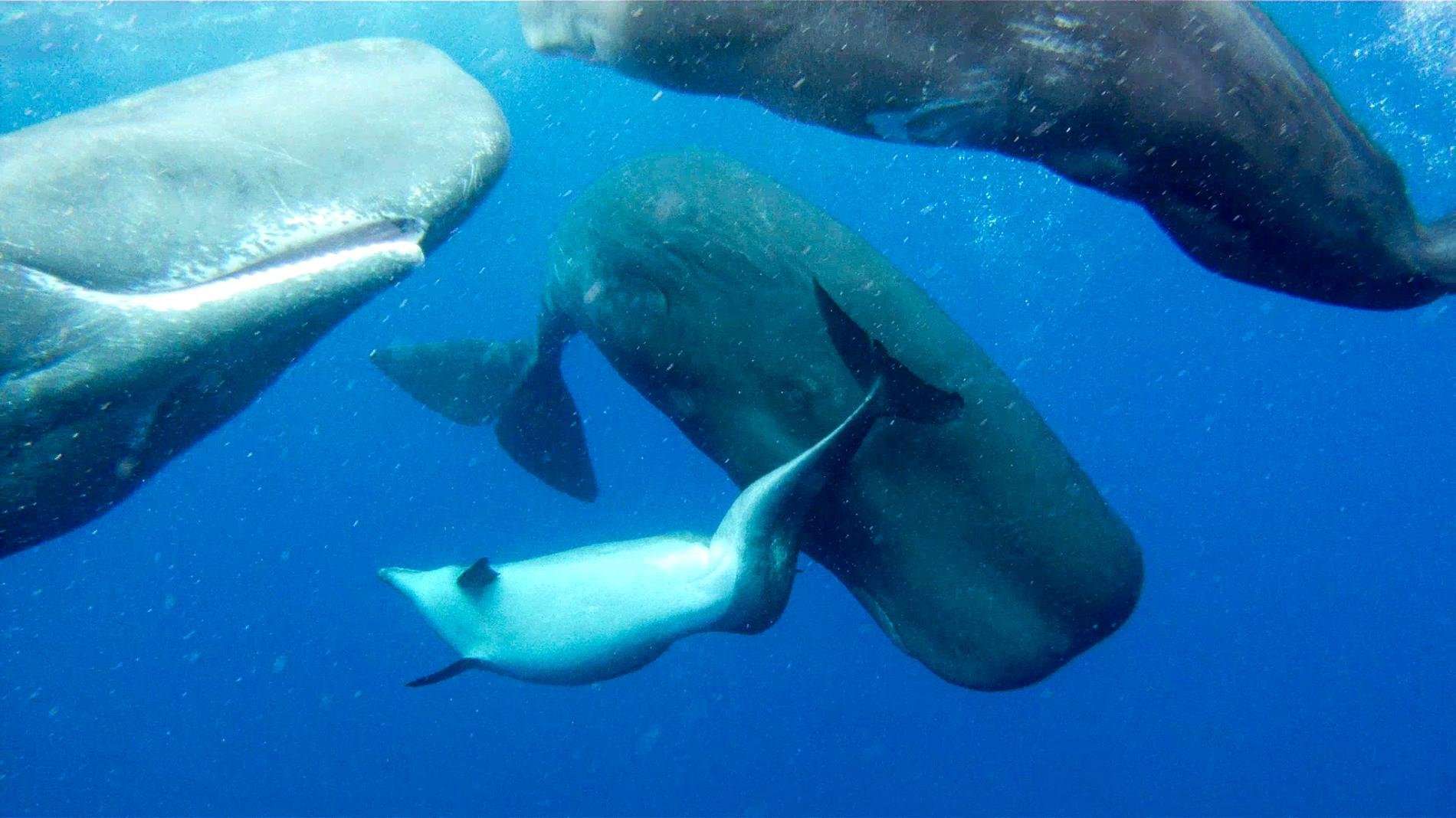In 2011, behavioral ecologists Alexander Wilson and Jens Krause of the Leibniz-Institute of Freshwater Ecology and Inland Fisheries in Germany were surprised to discover that a group of sperm whales (Physeter macrocephalus)âanimals not usually known for forging bonds with other speciesâhad taken in an adult bottlenose dolphin (Tursiops truncatus).
The researchers observed the group in the ocean surrounding the Azores (map)âabout 1,000 miles (1,600 kilometers) off the coast of Lisbon, Portugalâfor eight days as the dolphin traveled, foraged, and played with both the adult whales and their calves. When the dolphin rubbed its body against the whales, they would sometimes return the gesture.
Among terrestrial animals, cross-species interactions are not uncommon. These mostly temporary alliances are forged for foraging benefits and protection against predators, said Wilson.
They could also be satisfying a desire for the company of other animals, added marine biologist John Francis, vice president for research, conservation, and exploration at the National Geographic Society (the Society owns National Geographic News).
And although dolphins are known for being sociable animals, Wilson called the alliance between sperm whale and bottlenose dolphin rare, as it has never, to his knowledge, been witnessed before.
This association may have started with something called bow riding, a common behavior among dolphins during which they ride the pressure waves generated by the bow of a ship or, in this case, whales, suggested Francis.
"Hanging around slower creatures to catch a ride might have been the first advantage [of such behavior]," he said, adding that this may have also started out as simply a playful encounter.
Wilson suggested that the dolphin's peculiar spinal shape made it more likely to initiate an interaction with the large and slow-moving whales. "Perhaps it could not keep up with or was picked on by other members of its dolphin group," he said in an email.
But the "million-dollar question," as Wilson puts it, is why the whales accepted the lone dolphin. Among several theories presented in an upcoming paper in Aquatic Mammals describing the scientists' observations, they propose that the dolphin may have been regarded as nonthreatening and that it was accepted by default because of the way adult sperm whales "babysit" their calves.
Sperm whales alternate their dives between group members, always leaving one adult near the surface to watch the juveniles. "What is likely is that the presence of the calvesâwhich cannot dive very deep or for very longâallowed the dolphin to maintain contact with the group," Wilson said.
Why Are Gray Whales Losing Their Tails? May 7, 2018 - In 2018, there have been at least three sightings of tailless whales migrating north along the California coast. The injuries appear to be due to entanglement, probably by fishing gear, that either saws off the tail or cuts off its circulation.
Wilson doesn't believe the dolphin approached the sperm whales for help in protecting itself from predators, since there aren't many dolphin predators in the waters surrounding the Azores.
But Francis was not so quick to discount the idea. "I don't buy that there is no predator in the lifelong experience of the whales and dolphins frequenting the Azores," he said.

SpatialBasilisk on July 24th, 2018 at 13:45 UTC »
This news made my day at least 2% better.
Cockwombles on July 24th, 2018 at 11:11 UTC »
That's cute. I hope they don't like, use it for sex or anything.
This is wholesome, right?
skumpaa on July 24th, 2018 at 09:16 UTC »
And there's even a video of it!
https://www.youtube.com/watch?v=7iFzIMZRsoI